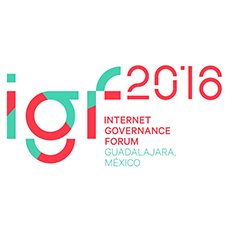Harnessing IoT to realize the SDGs: What’s Required?
7 Dec 2016 17:30h - 19:00h
Event report
[Read more session reports and live updates from the 11th Internet Governance Forum]
The workshop as a whole focused on the question: How can we harness the Internet of Things to realise the Sustainable Development Goals (SDGs)? The session addressed three main areas of concern:
- examples on how IoT is or can be used to realise the SDGs
- technologies and systems required for IoT
- policy approaches and options to accelerate the process
Speaking first, Mr Paul Rowney, Africa ICT Alliance (AflCTA), argued that the two main questions with regard to IoT in Africa are: first, is the continent ready? And second, is and should IoT be a priority? Universal access and bridging the digital divide need to be considered as important first steps. Rowney identified challenges in the form of lack of understanding, lack of regulation and policy environment, and lack of capacity. He argued that IoT needs to be on the agenda, but Africa is not ready to reap the full benefits of the IoT yet.
Ms Noelle Francesca De Guzman, Internet Society, focused on IoT in the Asia-Pacific region. She reminded us that it is a diverse region but that the developing countries in the region have a lot in common with their African counterparts when it comes to IoT. She highlighted a number of projects that utilise IoT: gas leakage detectors, sensors, which offer an early warning system regarding landslides, and mobile transponders for those trapped in the rubble after earthquakes. De Guzman pointed out that scalability, and related to that affordability, are major challenges for the use of IoT in the region. Another challenge she highlighted relates to the fact that data protection policies need to catch-up with technological developments.
Ms Ariel Balbosa, Technology Projects Director at Colnodo in Columbia, provided IoT examples from Latin America and described, first, IoT use for the detection of environmental factors related to asthma in real time in order to send warnings to vulnerable parts of the population and IoT applications for agricultural use. Also addressing concerns of security, she stressed the importance of private networks and private ecosystems.
Mr Peter Major, Vice-chairman of the UN Commission of Science and Technology for Development, outlined two main tasks for the UN Commission. First, it acts as a focal point for the WSIS follow-up within the UN system. Second, it acts as a forum for the examination of science and technology questions. Key points for the future of IoT highlighted by Major are spectrum management and IPv6. During the Q&A he voiced concerns over too much regulation and the impact this could have on the IG stakeholder model.
Mr Ricardo Pedraza-Barrios, Communications Regulatory Commission of Columbia, highlighted IoT as a factor in boosting agricultural productivity. Furthermore, he argued that IoT solutions for traffic management could really improve the quality of life of many of the urban citizens of developing countries.
Ms Jennifer Chung, DotAsia Organisation, addressed questions of privacy and security regarding IoT, especially in the context of developing countries. She compared and contrasted the cloud model and the local ecosystem model for storing information and stressed the importance of building trust in IoT. During the Q&A, she remarked that we need to keep the extent to which policy priorities are different in the global South in mind. Further, she stressed that IoT cuts across all SDGs, but that in order to be effective, IoT applications need to focus on providing solutions to local problems
Ms Jacquelynn Ruff, Vice President, International Public Policy and Regulatory Affairs, Verizon, provided examples of IoT uses. She mentioned tracking the supply chain for medicines and pharmaceuticals and smart cities and traffic management. She argued that key factors for the success of IoT for the SDGs are extensive and reliable infrastructure, policy, and licensing. She further observed a trend towards localisation of data as a means to address privacy and security questions and voiced concerns that localisation could create barriers to those services that will be important in achieving the SDGs.
Interventions from the audience pointed to the lack of regulations and the fact that regulations for IoT are approached from a telecommunications mind-set, which does not offer a good fit. Another intervention stressed the importance of the human factor and the human-IoT interface.
Related topics
Related event

